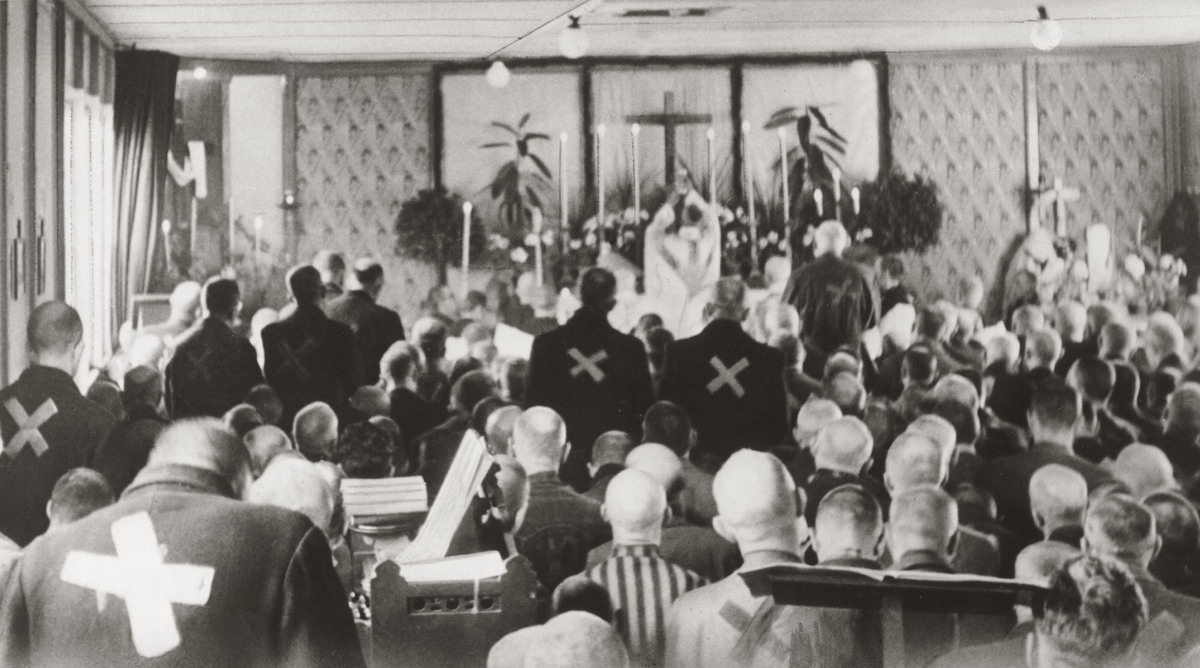Source

Source: Black and white photograph, 1942. Unknown photographer. Katholische Nachrichten Agentur (kna), KNA_30241
The Dachau Concentration Camp, located in the town of Dachau not far from Munich, was the first camp opened during the Nazi period. Established in 1933, the camp held political prisoners, Jews, homosexuals, Sinti and Roma, and others. Inmates were forced to perform arduous labor, as well as drill-style exercises, and had to contend with daily physical and psychological abuse by SS guards. Also among the long list of prisoners were Catholic priests and Protestant ministers. These religious leaders were typically imprisoned for publicly criticizing the regime. This photograph shows a weekly mass in what would become known as the Priesterblock [priests’ barracks], a section of the camp reserved for religious men. The first priest arrived at Dachau in 1935; in the years that followed, an estimated 2,700 priests and ministers were imprisoned at Dachau. By 1945, approximately 1,000 of them had died.
The effort to imprison both Catholic and Protestant leaders reflected a wider struggle between Germany’s Christian institutions and the regime. Hitler and other high-ranking Nazi officials, such as Martin Bormann, believed that Christianity had the power to undermine the state’s authority over the individual. At the same time, Nazi leaders recognized that Christians both within Germany and beyond its borders were wary of policies that limited their rights. While some guards were deeply hostile to religious inmates, the existence of these masses suggests that Christian clergymen were afforded certain privileges. Jews and Jehovah’s Witnesses, for example, were not allowed to perform religious rituals within the camp’s walls.

Source: Black and white photograph, 1942. Unknown photographer. Katholische Nachrichten Agentur (kna), KNA_30241
© KNA